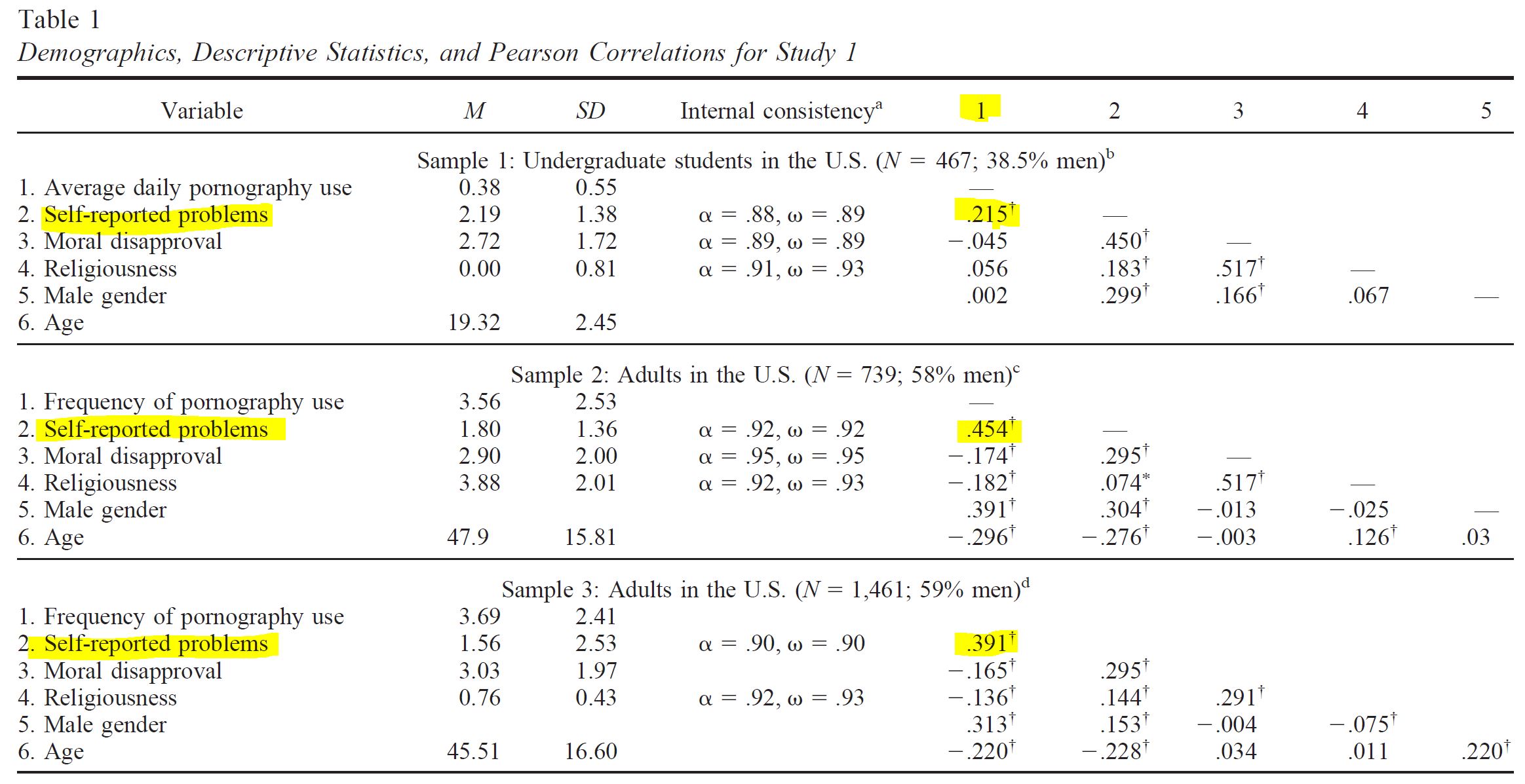Exposing falsehoods in David Ludden’s “When Does Pornography Use Become Problematic?” (2020)
David Ludden’s Psychology Today blog post claims to be about this Joshua Grubbs study: Moral incongruence and compulsive sexual behavior: Results from cross-sectional interactions and parallel growth curve analyses. Not surprisingly, Grubbs abstract doesn’t accurately reflect the study’s actual findings: porn addiction correlates most strongly with porn use (not “moral disapproval” or “religiosity”). Grubbs is master at clever spin and creator of biased writes ups.
Ludden’s primary assertion can be summed by it’s subtitle:
It’s a problem if you think it’s one.
The entire premise of Ludden’s article is based on a lie. He falsely claims that porn use did NOT correlate with “self-perception of it being problematic” (as assessed by the CPUI-4, a porn addiction questionnaire).
The results were as the researchers expected. Specifically, frequency of pornography use in itself didn’t correlate with the self-perception of it being problematic.
In reality, levels of pornography use was the variable correlating most strongly “self-perception of it being problematic”. Better than religiosity or moral disapproval.
GRAPH FROM THE GRUBBS STUDY: Number 1 is porn use. The highlighted numbers are correlations between porn use and self reported problems (used the CPUI-4). As you can see, porn use (average daily use or frequency) was the best predictor of “self-perception of it being problematic“.

No doubt Ludden’s PT blog post will be cited over and over again, even though it is pure fiction.

Leave a Reply
Want to join the discussion?Feel free to contribute!